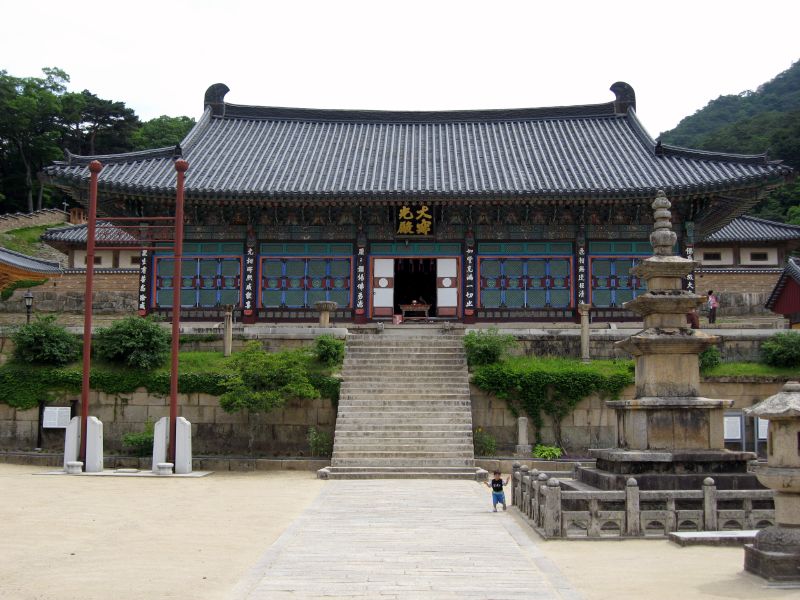Haeinsa Temple Origin
Haeinsa Temple was built in the year 802 during King Ae-Jang’s reign. There were two monks, Suneung and Ijung, who cured King Ae-Jang’s sick wife. As a result, the king ordered the temple to be built out of gratitude to Buddha’s mercy. So the legend goes, anyways, but can’t be verified. It makes for a good story though.
“Haein” originates from the expression Haeinsammae from Buddhist scripture. Haeinsammae means truly enlightened world of Buddha and our naturally undefiled mind.
The temple was renovated in the 10th century, 1488, 1622, and 1644. Temple abbot Hurirang enjoyed the patronage of Taejo of Goryeo during that king’s reign. Haeinsa was burned down in a fire in 1817 and was subsequently rebuilt in 1818. Another renovation in 1964 uncovered a royal robe of Gwanghaegun of Joseon. He was responsible for the 1622 renovation, and an inscription on a ridge beam.
Daejeokkwangjeon is the main hall and is unusual because it is dedicated to Vairocana. That is because most other Korean temples house images of Gautama Buddha in their main halls.
Tripitaka Koreana
Haeinsa Temple is home to many treasures and artifacts.The most important and well known treasure is Tripitaka Koreana. Tripitaka is a collection of Buddhist scriptures. Tripitaka is a Sanskrit word which means three baskets. It is the world’s most comprehensive and oldest intact version of Buddhist canon in Hanja script.
Silver magnolias growing near the South Sea and Geojae area were used to make the printing blocks. They were cut down and soaked in sea water for several years and then dried to make the printing blocks. The blocks are a result of the king and his people’s effort to repulse the Mongolian army with support from Buddha. It took 16 years to finish the Tripitaka Koreana.
There are no known errors in the over 52 million characters. The scriptures are organized in over 1496 titles and 6568 volumes. Each wood block measures 24 centimeters in height and 70 centimeters in length. The thickness of the blocks ranges from 2.6 to 4 centimeters and each weighs about three to four kilograms. The woodblocks are almost as tall as Mount Baekdu at 2.74 km when stacked. It measure 60 km long when lined up and weigh 280 tons in total. The woodblocks are in pristine condition without warping or deformation despite being created more than 750 years ago.
UNESCO World Heritage Site Designation
Tripitaka Koreana is not the only treasure located inside the temple. There are 15 more public treasures and some 200 private treasures enshrined at Haeinsa Temple. Haeinsa Temple was designated as a UNESCO World Heritage site in December of 1995 because of its many cultural properties and historical remains. Iljumun, Daejeokgwangjeon and the Tripitaka Koreana are recognized as famous treasures. Iljumun Gate was the first gate that every sattva must pass to become a Buddha and considered as a representative work of ancient architecture.
Check out other things to do in Korea: https://thisiskoreatours.com/things-to-do-in-korea/
Book a tour with This is Korea: https://thisiskoreatours.com/korea-tour-package/
Learn more about Haeinsa Temple: https://en.wikipedia.org/wiki/Haeinsa
Operating Hours
Summer Season: 08:30am to 6:00pm
Winter Season: 08:30am to 5:00pm
Admission Fees
Adults (ages over 19): 3,000 won / Group: 2,500 won
Youths (ages 13-18): 1,500 won / Group: 1,000 won
Children (ages 7-12): 700 won / Group: 500 won
*Group: 30 people or more
Map

